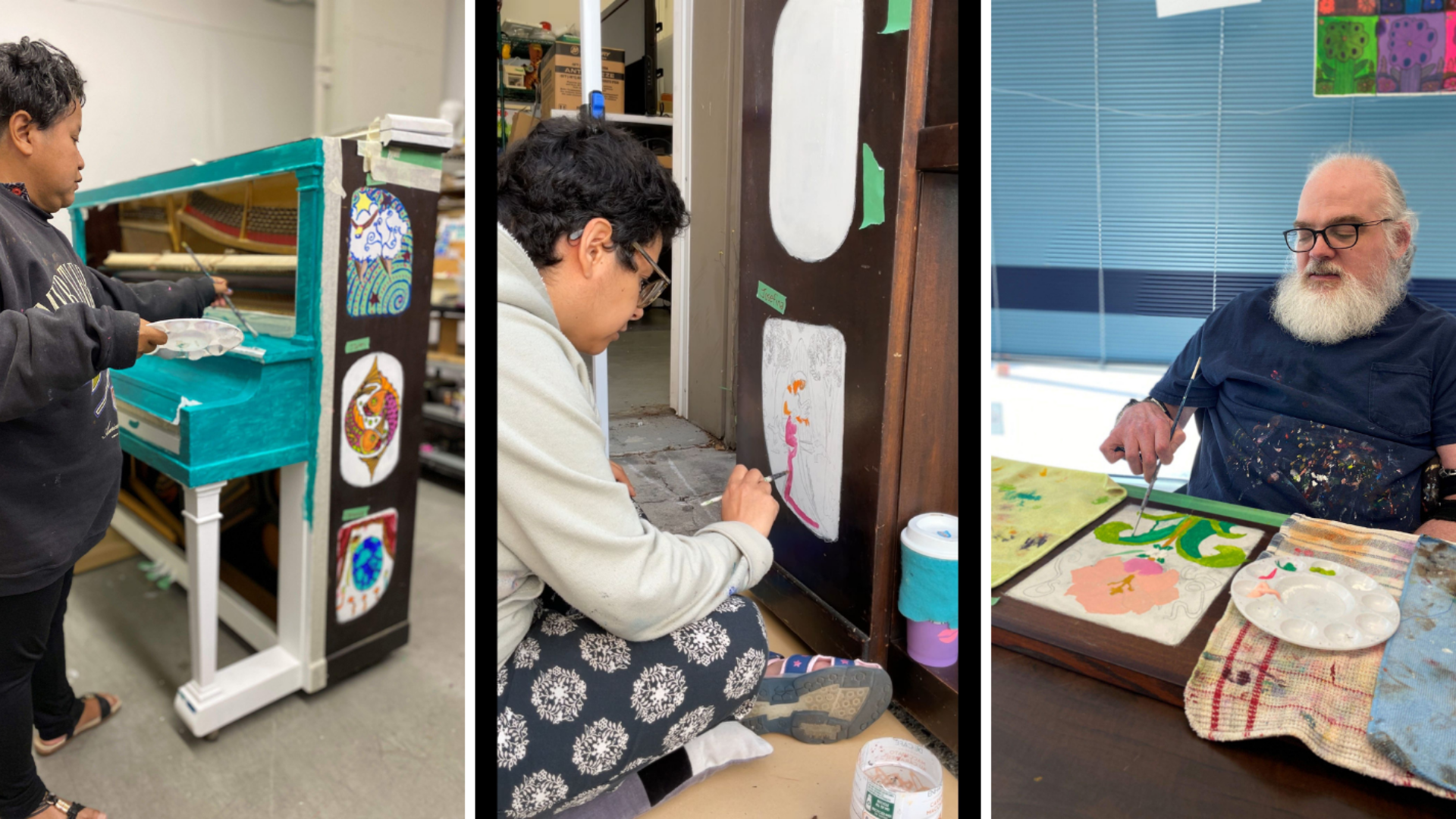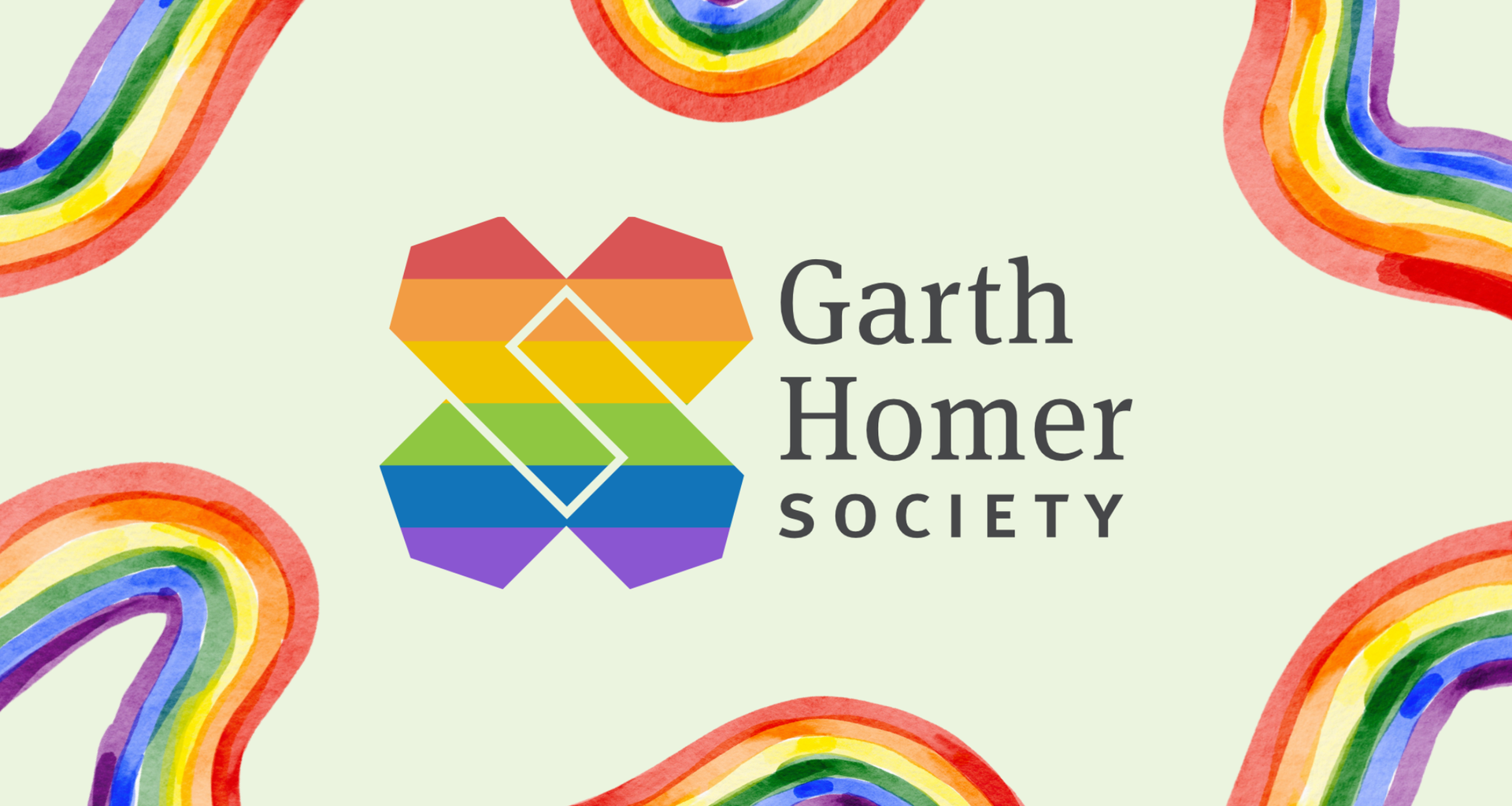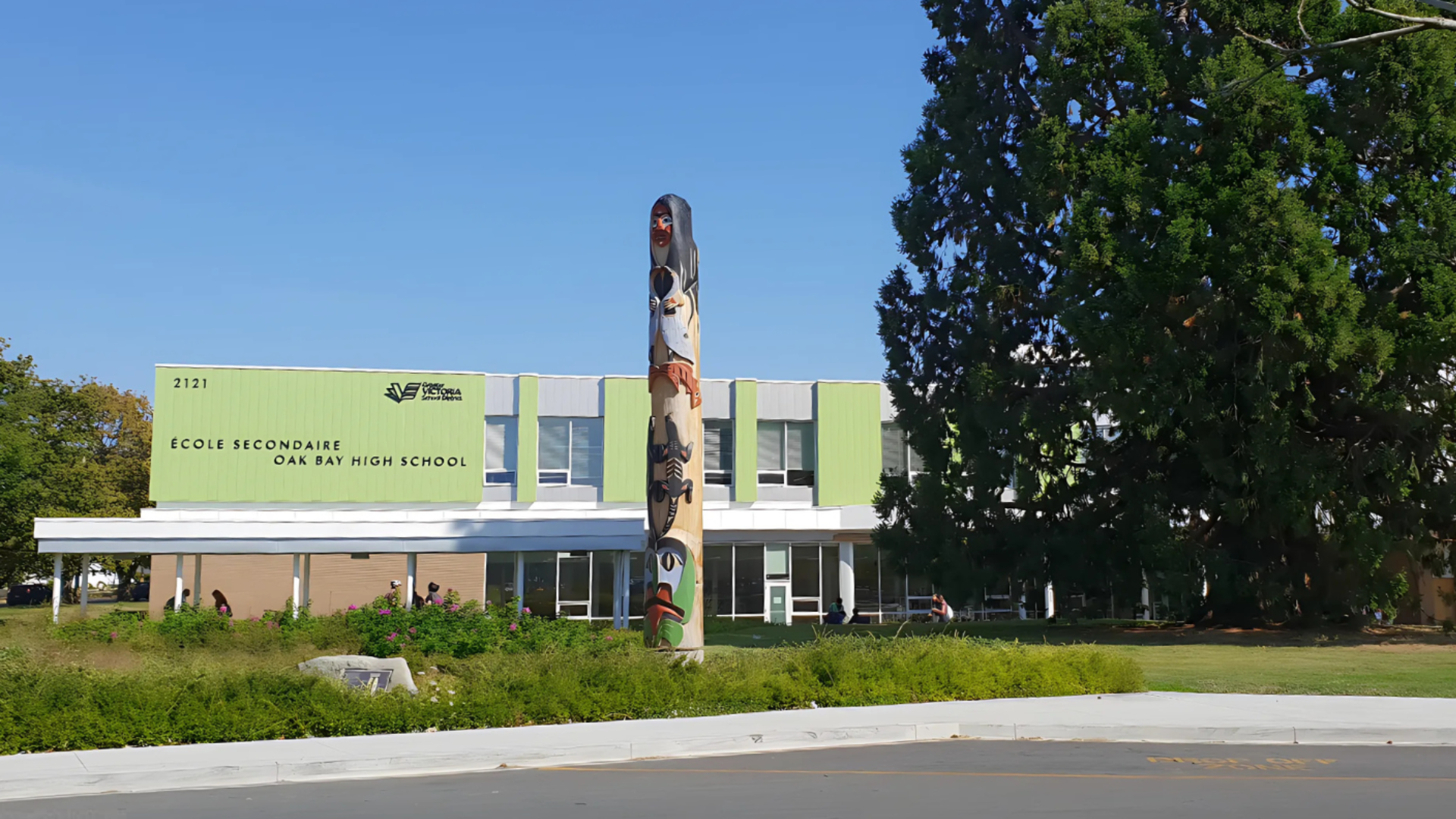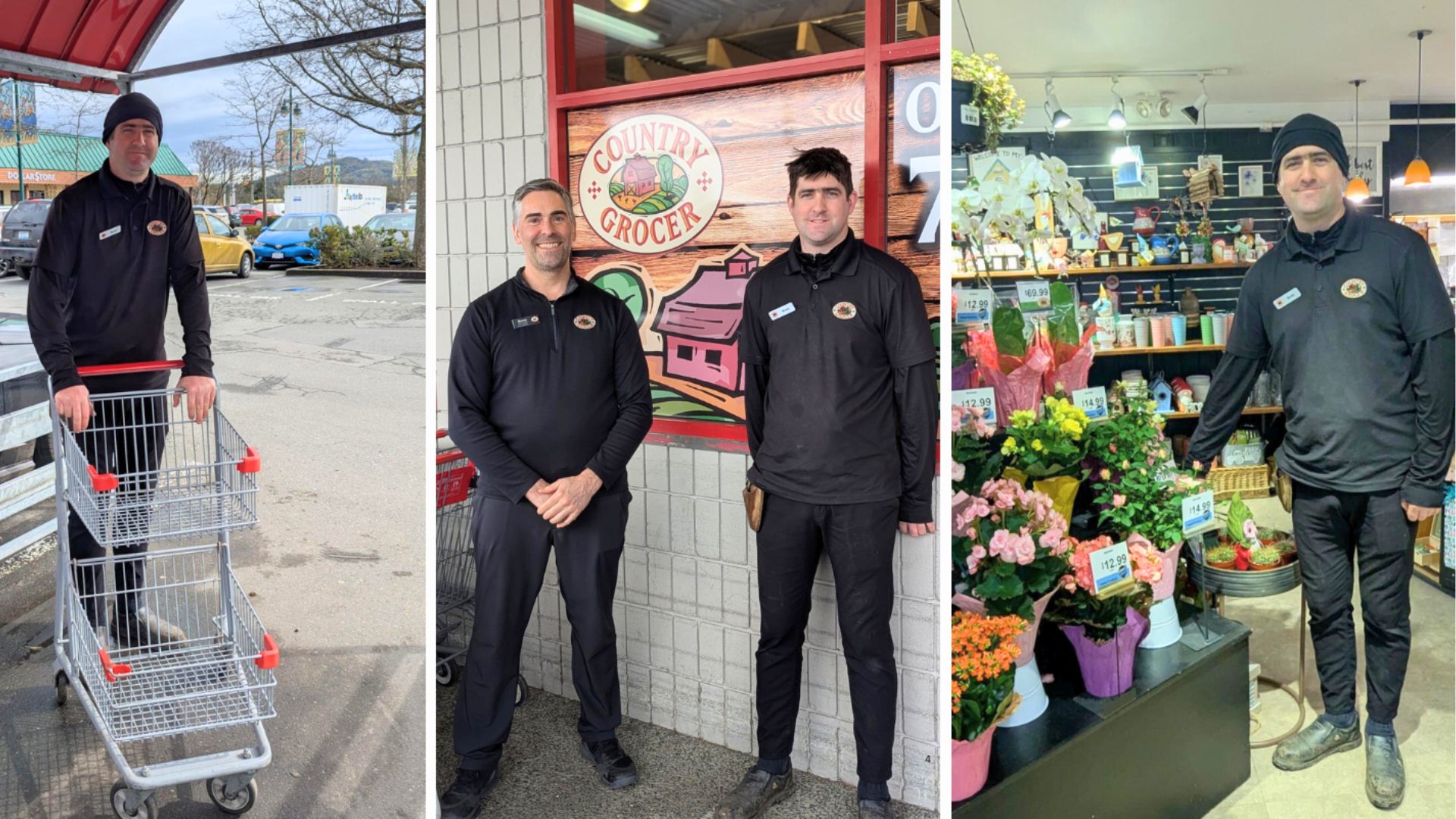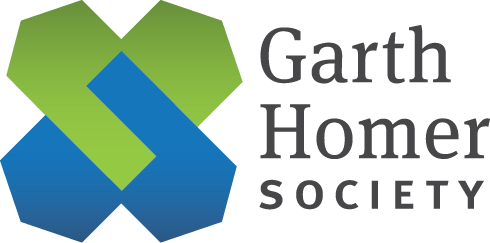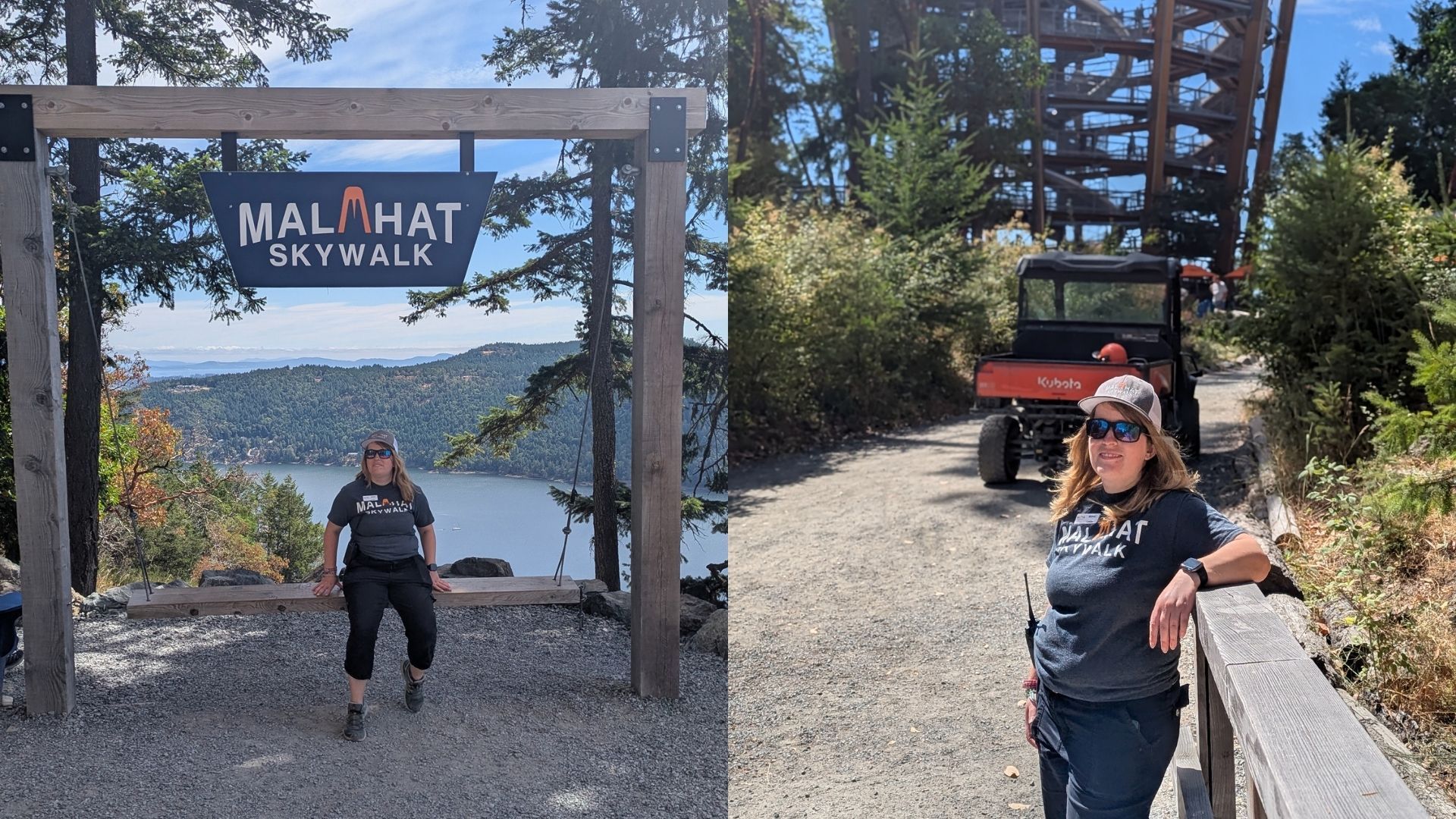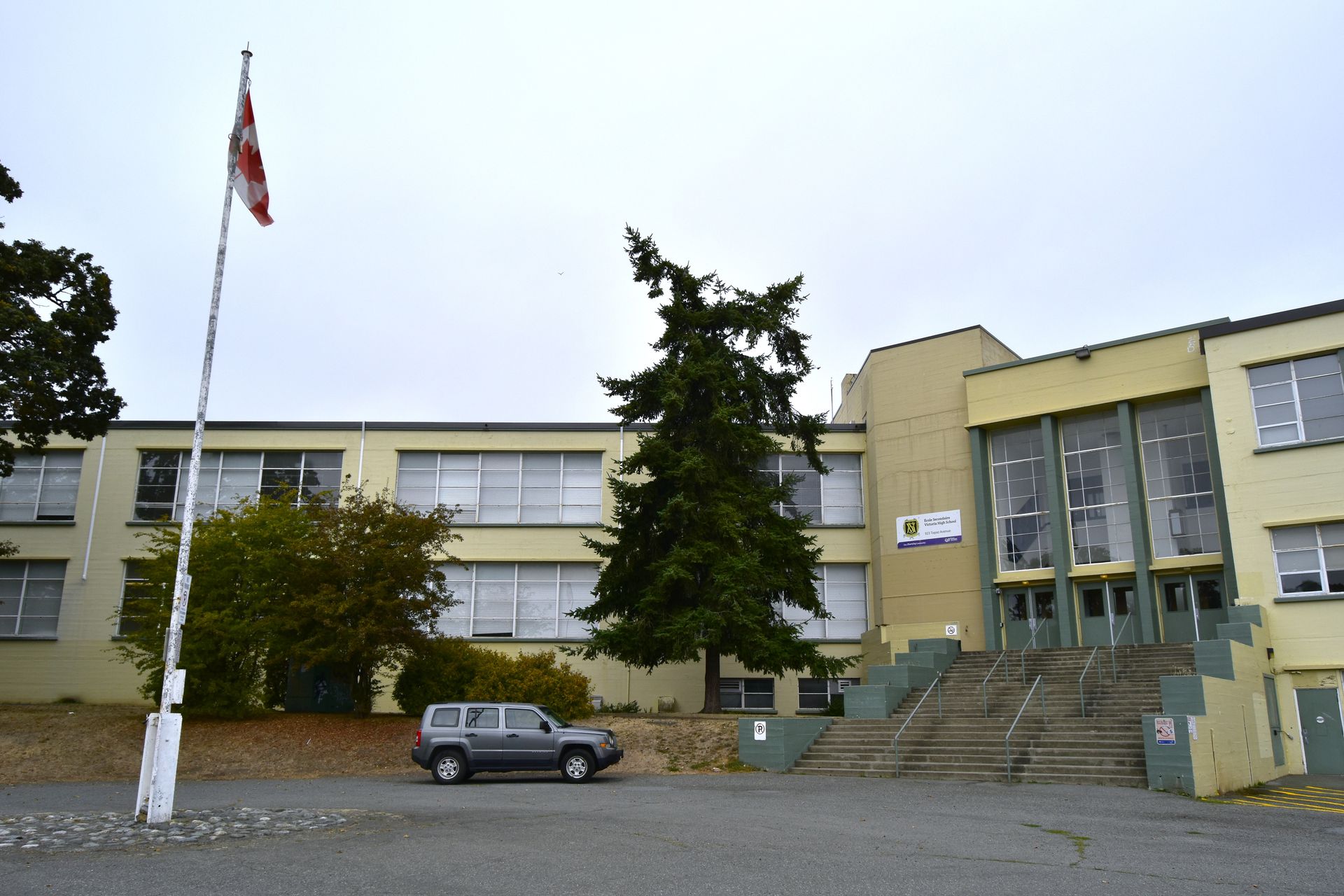ArtWorks Program Artist Tanya Steinhausen Holding Exhibition
Light and colour. It’s what greets you at the door when you visit Garth Homer Society’s ArtWorks studio space in downtown Victoria and what shines through the myriad of pieces created by one of the program’s first participants. Tanya Steinhausen started as a volunteer in 1996 and didn’t know she had any artistic talent until ArtWorks’ staff pointed out her knack for colour and design.
Today she works with a variety of media – from permanent markers to paint, yarn and fabric. “It allows me to express different ways of making things and makes me happy that I’m using my imagination,” says Tanya.
She’s supported in her artistic journey by Garth Homer vocational counsellor Karen Godoy – an artist herself. “It’s my mission to help her to turn her truth and ideas into art,” says Godoy. “Tanya brings her ideas and together we figure out ways to get around barriers in turning her vision into art.”
Often that means considering material or process adaptations. It’s an approach that has successfully led to Tanya’s solo three-month exhibition, through October 21st at the Greater Victoria Public Library Emily Carr branch in Saanich. As part of the Victoria Arts Council’s community satellite program’s approach, artists curate their own showcases and choose their preferred venue. For Tanya that meant selecting a location that she could independently travel to, via transit, and one that was close to her part-time job so that colleagues and friends were able to visit the exhibition.
Laura Dutton, Victoria Arts Council’s director of community programs, says featuring Tanya’s artistic talent was an easy decision to make, “It really stood out to me as something new and special - and I see a lot of work”.
“She is doing such interesting things with her textile work,” explains Dutton. “I think it’s whimsical, fun and interesting, and that’s what stuck out to me originally,” she adds while mentioning the detail and colour work in Tanya’s drawings are standout features as well.
Godoy agrees. “As an artist Tanya is pure happiness. She is vibrant, super high energy and we see it all in her work. She’s really positive.”
For more information about Tanya’s exhibition visit : GVPL Emily Carr – VICTORIA ARTS COUNCIL (vicartscouncil.ca)

